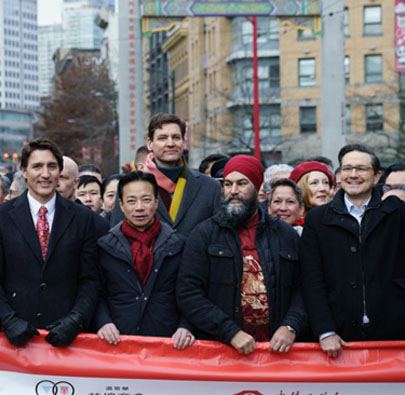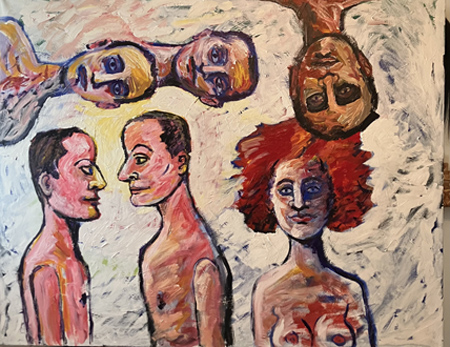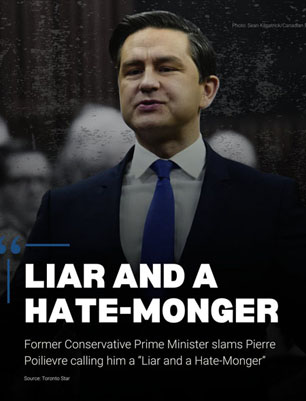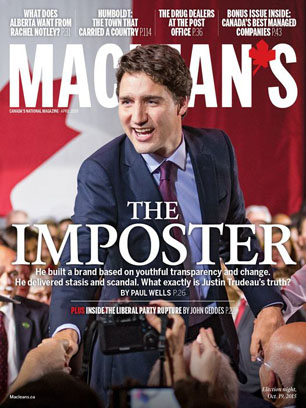Polling from last half 2023 and first quarter 2024 may not be reliable guide to Canadian election in fourth quarter 2025
Mar 12th, 2024 | By Randall White | Category: In BriefRANDALL WHITE, FERNWOOD PARK, TORONTO . TUESDAY, MARCH 12, 2024. Individual polls vary on exact numbers. But by almost the middle of March 2024 all polls have been saying for some time that it is very hard to see how the Justin Trudeau Liberals could “win” a fourth Canadian federal election in a row, in any at all near future.
Some recent polls have placed the New Democrats within shouting distance of the Liberals as well. (See eg obscure footnote at end of this piece,)
This has inevitably led to speculation that Jagmeet Singh’s New Democrats, thinking they could at least replace the Liberals as official opposition in a fresh election, might abrogate the current Liberal-NDP Supply and Confidence Agreement, and vote to bring the Trudeau Liberal minority government down.
On these assumptions there no doubt could be a federal election in Canada in 2024 — along with elections in more than 60 other countries globally — in the fateful year we are living through in many parts of the world.
If there is a federal election before the end of this year, the smart money has to say what polling guru Éric Grenier said yesterday to prospective newsletter subscribers : “As we enter the spring, the polls aren’t getting any better for Justin Trudeau’s Liberals, leaving the Conservatives with multiple paths to a majority government when the next election is held.”
On this same logic a Conservative Prime Minister Pierre Poilievre — younger and not remotely as rich but otherwise almost as twisted as Donald Trump? — is more or less inevitable before the end of this year. It still seems to me, however, that all this rests on a certain assumption about the ultimate objectives of Jagmeet Singh and his federal New Democrats.
The 2024 election scenario, that is, assumes the highest and/or most important objective of the federal New Democrats is just to replace the Liberals as official opposition. (There is absolutely nothing in current polling to suggest that the New Democrats could actually win even a minority government in a fresh election — ie replace the Liberals as a federal governing party.)
Whatever happens between the Liberals and New Democrats, the bottom line of any election this year (certainly as it looks now) is Éric Grenier’s multiple Conservative paths to a majority government.
Some voters as old as I am will also remember that we’ve seen all this before, in 2006, 2008, and 2011, with the inadvertent symbiosis between Jack Layton’s New Democrats and Stephen Harper’s Conservative governments. (And with special reference to the 2011 election, when the NDP did replace the Liberals as official opposition, while the Conservatives won a 166-seat majority government with 39.62% of the cross-Canada popular vote!)
My memory similarly goes back to the summer of 2015, sleeping out on the dock by a still largely pristine lake in the north of Southern Ontario, looking at the stars.
Back then it actually seemed that in the coming October 19, 2015 election Canada might finally see its first New Democratic federal government, with Tom Mulcair from Quebec as prime minister. (And this would at last fulfill the late Jack Layton’s interim official opposition strategy, even if it did temporarily come with a Stephen Harper majority government in 2011.)

Yet when the 2015 election finally arrived in the fall Justin Trudeau’s revived Liberal Party of Canada won a 184-seat majority government in Ottawa, with 39.47% of the cross-country popular vote. The Mulcair New Democrats, leading in the polling over the summer, ultimately won only 44 seats with 19.72% of the popular vote.
With this history in mind, the rational calculation right now for a New Democratic Party whose main objective is to keep some kind of progressive policy process in government at the federal level is more than arguably to just hang onto the Liberal-NDP Supply and Confidence Agreement that is now almost two years old.
Whatever its other problems may be, the recent Liberal-NDP work on Canadian pharmacare policy does show how New Democrats can stiffen the progressive instincts of the Trudeau Liberal minority government between now and the next legislated fixed-date federal election “on or before October 20, 2025.”
Barring some polling a little further down the road that shows serious chances of even just an NDP minority government in some earlier “snap election,” the rational calculation for Jagmeet Singh and his New Democrats is to keep the Trudeau Liberals in office more or less until the next legislated fixed-date election on October 20, 2025.

The world we live in (especially in 2024) is certainly far from rational. But it is part of the progressive cause to at least try to make this world somewhat more rational — in the interests of human survival. (As in eg it is not rational to resort to total warfare when nuclear weapons that could destroy the planet are available, despite what Goldfinger, Dr. No, and Vladimir Putin may think.)
There are various signs, it at least seems to me, that both Jagmeet Singh and Justin Trudeau are ultimately persons who calculate rationally (more or less). And, whatever else, history does suggest that opinion polls from the last half of 2023 and first quarter of 2024 may not be a reliable guide to an election in the fourth quarter of 2025!
OBSCURE FOOTNOTE : Both Nanos Research and Angus Reid have lately put the Liberals at 23% and the NDP at 21%. The latest Abacus poll has the Liberals at 24% and the NDP at 18%. The latest (March 10) 338Canada polling averages have Liberals at 24% and the NDP at 19%.




